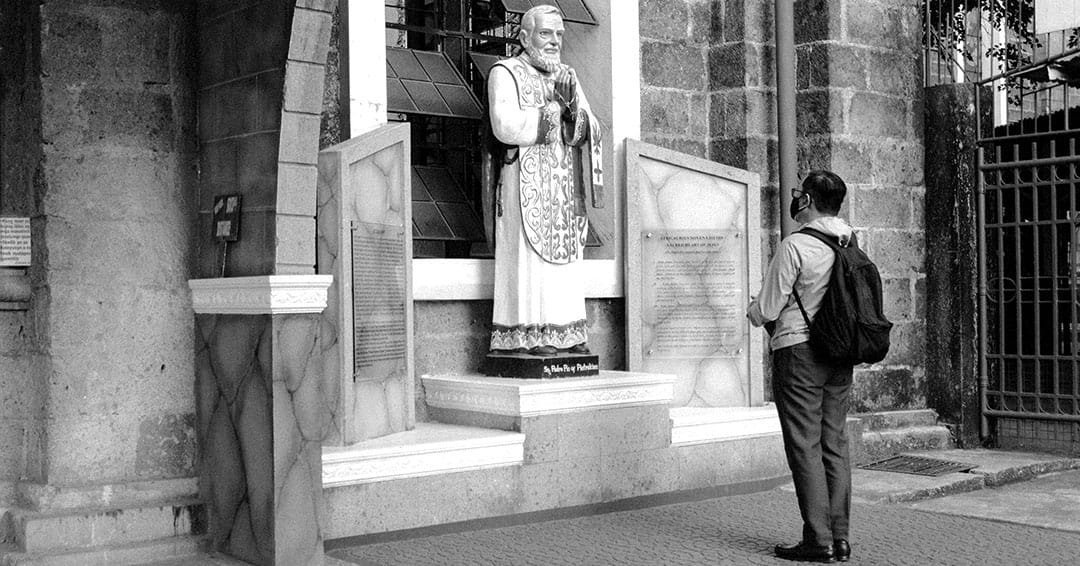

In the quiet recesses of the 20th century, a period defined by the roar of war, the chaos of revolution, and the disquiet of secularism, there lived a man whose life seemed woven from the fabric of another age. Francesco Forgione, known to the world as Padre Pío, was born in 1887 in the rural village of Pietrelcina, Italy. From childhood, he exhibited a singular sensitivity to the divine, slipping into mystical states and enduring interior struggles that would later define his extraordinary path. His life defied easy explanation or rationalization. It was a life meant to perplex and provoke, to awe and awaken. Above all, it was a life fully offered.
Padre Pío's story hinges on the mystery of his stigmata, the visible wounds on his hands, feet, and side that mirrored Christ's crucifixion. They first appeared in 1918, soon after he offered himself as a victim for the end of World War I, and remained with him for fifty years. These were not symbolic marks but living wounds, bleeding and unhealed, perpetual signs of divine intimacy and agony. To skeptics, they invited scrutiny. To the faithful, they inspired reverence. Some witnesses even reported that his wounds emitted a fragrant smell of roses, a scent traditionally associated with sanctity. For Padre Pío, they were a burden of love, borne not for spectacle but for souls. "I am only a poor friar who prays," he once said.
And pray he did.
Prayer was the rhythm of his existence. He rose at 2:30 each morning to prepare for Mass, which he celebrated with such devotion that it often lasted two hours. To him, the Eucharist was not ritual but participation in Christ's living sacrifice. Witnesses spoke of a palpable stillness when he elevated the host, as if heaven itself bent low in that humble Franciscan chapel in San Giovanni Rotondo.
Yet Padre Pío's sanctity extended far beyond the stigmata or his asceticism. It shone in his compassion for sinners, in the endless hours he spent in the confessional, and in his miraculous gifts, including bilocation, prophecy, healing, and the reading of souls, which left even skeptics stunned. Pilgrims flocked to him from across the world, seeking counsel. He gave them not comfort alone but challenge. His guidance was never indulgent. It was precise, cutting through spiritual confusion with gentle clarity, always directing souls toward repentance, grace, and union with Christ.
Despite his fame, Padre Pío endured profound suffering, physical, emotional, and spiritual. Misunderstood and maligned, he was even silenced temporarily by Church authorities. Like many saints, he dwelt in the tension between heaven's mysteries and the world's skepticism. Yet he never rebelled. He obeyed, and in obedience, he grew.
The miracles tied to his life and intercession are legion: healings of terminal illness, sudden conversions, wartime protections, divine guidance through dreams. His spiritual influence endures, undimmed by time. This is why he remains not a relic of the past but a saint for our fractured, frantic future.
He is a saint for those who struggle to pray, to suffer, to believe.
When Pope John Paul II, who had visited him as a young priest, beatified him in 1999 and canonized him in 2002, it was more than an honor. It was an invitation to enter the mystery of redemptive suffering, to embrace sacrifice and contemplation, and to approach Christ through the scarred hands of a humble friar.
His feast day, celebrated each year on September 23, is more than a remembrance. It is a summons to stillness, to silence, to surrender in the midst of noise and doubt. In an age where noise drowns out silence and screens replace stillness, Padre Pío's life burns like a candle in the dark, quiet, steady, unyielding. He teaches that the miraculous is not the absence of pain but God's presence within it. That holiness is surrender, not perfection. That suffering love can redeem.
And in this restless world, perhaps that is miracle enough.
Pray, hope, and don't worry.
—St. Padre Pío of Pietrelcina
